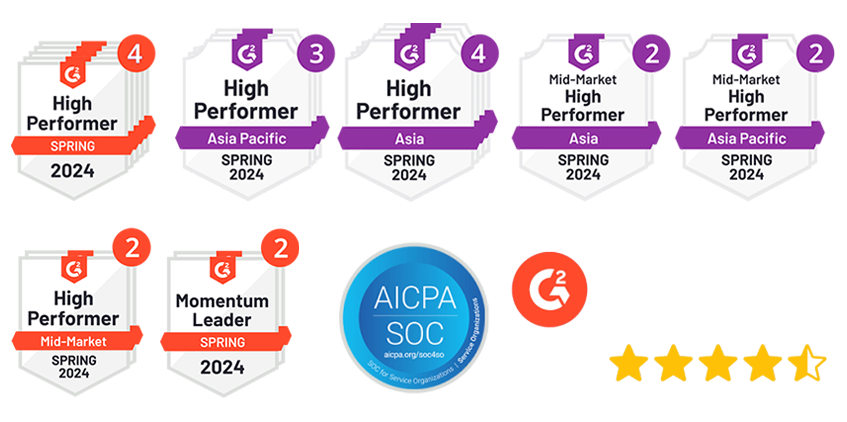Large companies need smooth international payments, yet many face high fees, slow transfers, and security risks. These issues disrupt cash flow and delay operations. Unpredictable transactions make planning and growth difficult. In this blog, we explain B2B cross-border payments and the challenges businesses face.
New trends are changing global payments. Real-time networks speed up transfers, while AI tools cut fraud risks. Blockchain and data analytics bring clarity and reduce costs. This guide shows how these trends improve efficiency and help your business run better.
Understanding B2B Cross Border Payments
B2B cross-border payments are transactions between businesses in different countries. They let companies pay for goods or services from overseas suppliers. These payments involve converting money from one currency to another and often pass through several banks.
For example, imagine a U.S. manufacturer that buys raw materials from a supplier in Germany. The manufacturer sends payment in U.S. dollars, and the supplier receives the funds in euros. This type of transaction is a B2B cross-border payment. It requires careful handling to manage fees, exchange rates, and timing.
Understanding these basics is key. It helps businesses plan better and avoid delays. By knowing how international transactions work, you can pick the right methods to save time and money.
Emerging Trends in B2B Cross-Border Payments
Businesses often face problems with international payments. High fees, slow transfers, and fraud are common issues. Now, new solutions are improving the process. Let’s learn more about them:
1. Real-Time Networks
Real-time networks send money instantly across countries. Companies don’t need to wait days anymore. A business in the U.S. can quickly pay suppliers in Europe. Faster payments keep business moving without delays.
2. AI for Fraud Prevention
AI detects unusual payment activity right away. It alerts businesses before fraud happens. Companies stay safe, protect their money, and avoid extra work or worry.
3. Blockchain Technology
Blockchain creates secure, clear records of transactions. Businesses easily track payments step-by-step. Each payment detail is clear, reducing confusion. Companies can complete deals faster and more safely.
4. Data Analytics for Smarter Decisions
Data analytics gives businesses clear payment reports. These reports show exactly where the money goes and identify costly fees. Companies find cheaper payment methods easily. Better insights help businesses save money and make smarter payment choices.
Key Factors Driving Trends in B2B Cross-Border Payments
Several factors are shaping how businesses send and receive money internationally. These changes help companies reduce costs, speed up transactions, and stay secure. We have discussed some of the important factors for B2B cross-border payments below:
1. Lower Costs
Businesses want to avoid high fees on international payments. Every extra charge adds up, reducing profits. More companies are choosing payment methods with lower fees and better exchange rates.
2. Faster Transactions
Delays in payments slow down operations. If a vendor waits too long for payment, orders may be delayed. Faster transactions keep supply chains moving and help businesses avoid cash flow problems.
3. Stronger Security
Fraud is a major concern in cross-border payments. Scammers target businesses by intercepting transactions or stealing payment details. New security tools help detect suspicious payments and keep funds safe.
4. Better Transparency
Tracking payments is difficult when multiple banks and systems are involved. Businesses need clear records of when money is sent and received. Better tracking tools help companies avoid confusion and disputes.
5. Stricter Compliance Rules
Governments have introduced tougher regulations for international payments. Businesses must follow these rules to avoid penalties. Choosing a payment method that meets compliance requirements makes global transactions smoother.
By understanding these factors, businesses can choose the right solutions for secure, cost-effective, and fast global payments.
Benefits for Large Enterprises
Large businesses gain many advantages by improving how they handle international payments. These changes help them operate more efficiently, cut costs, and stay secure.
1. Lower Costs and Higher Profits
Reducing fees and getting better exchange rates saves big companies a lot of money. Even small cost reductions can mean more profit over time. These savings help businesses grow and reinvest in other areas.
A study by the Bank for International Settlements (BIS) found that fluctuations in exchange rates significantly impact corporate investment decisions. When a company’s home currency strengthens, its export revenues decrease in local currency terms, leading to reduced profits and lower investment levels. Conversely, a weaker home currency can boost export revenues and profits, encouraging higher investment. This illustrates how exchange rate movements directly affect a company’s profitability and strategic choices
2. Smoother Cash Flow
Faster payments and more predictable timelines help companies keep their cash flow steady. When money moves quickly, businesses can plan their spending better. This makes it easier to meet financial goals and avoid running out of cash at the wrong time.
A study by the European Commission found that timely payments improve business cash flow. Companies getting paid faster had stronger finances and more stable operations. The research showed that businesses receiving quicker payments handled money better and grew more consistently.
3. Stronger Security
Large businesses process many international payments, making them a target for fraud. Using more secure methods helps protect company funds. This safety reduces stress and builds trust with suppliers and partners.
In 2022, global e-commerce fraud losses reached $41 billion and are projected to exceed $48 billion in 2023. These statistics highlight the important need for large businesses to implement security measures to protect their funds and maintain trust with partners.
4. Clear Payment Tracking
Having a clear view of payment activity makes it easier for businesses to find problems and fix them. Tracking payments well can highlight hidden costs, helping the company save even more. It also helps make smarter decisions about future deals.
5. Simple Compliance
Complying with international rules can be tricky. Using systems that follow these rules makes it easier for businesses to meet legal requirements. This reduces risks and lets them focus on other important tasks.
By taking advantage of these benefits, large enterprises can reduce costs, improve cash flow, and strengthen their global partnerships.
How Peakflo Helps with B2B Cross-Border Payments
Peakflo makes sending money overseas simple. It automatically creates invoices and sends payment reminders so you never miss a deadline. You can track payments in real-time to know exactly where your money is. With fair exchange rates and strong security, Peakflo saves money and protects your funds while fitting right into your current system.
1. Receive Payment from International Customer
Peakflo creates invoices automatically and sends timely reminders. This means fewer manual tasks and faster payments. With quicker follow-ups, your business improves cash flow and reduces administrative work. Peakflo’s Customer Portal allows your customers to make payments in any format and currency seamlessly.
2. Pay Internation Vendors
Managing cross-border payments can be complicated, especially when dealing with multiple platforms and currencies. Peakflo simplifies this by allowing accounts payable teams to pay approved bills directly within the platform. This eliminates the need to switch between different tools or banks, saving time and reducing the risk of errors. With everything in one place, businesses can streamline their payment processes, ensuring timely and accurate payments across borders while improving efficiency. Peakflo makes international payments smoother, faster, and more secure, helping your business thrive globally.
3. Real-Time Payment Tracking
Peakflo lets you monitor each payment as it happens. You can see when funds leave and arrive, keeping you informed at all times. This clear view helps you plan spending and avoid delays.
4. Seamless Integration with Accounting Systems
Peakflo connects easily with the accounting software you already use. This smooth integration means fewer errors and a clear view of your finances. It saves time and makes managing international payments easier.
These features work together to make Peakflo the best solution for B2B cross-border payments. With faster payments, lower costs, and strong security, Peakflo helps your business thrive globally.
Conclusion
Managing B2B cross-border payments can be a real challenge. High fees, delays, and security risks often drain resources and slow growth. Peakflo removes these barriers with automated invoicing, real-time payment tracking, competitive currency conversion, and strong security measures that protect your funds. The platform also fits seamlessly with your accounting system, helping you maintain clear records and steady cash flow.
Take control of your global transactions today. Switch to Peakflo and experience faster payments, lower costs, and a more secure process. Let Peakflo simplify your international payments so you can focus on growing your business. Try Peakflo now and transform the way you handle B2B cross-border payments.










![Why AI Sales Calls Are Making Good Sales Reps Even Better [2025 Guide] ai sales calls](https://blog.peakflo.co/wp-content/uploads/2025/09/65168cf6-3001-4733-8cbc-12d5684cf449-218x150.webp)


































